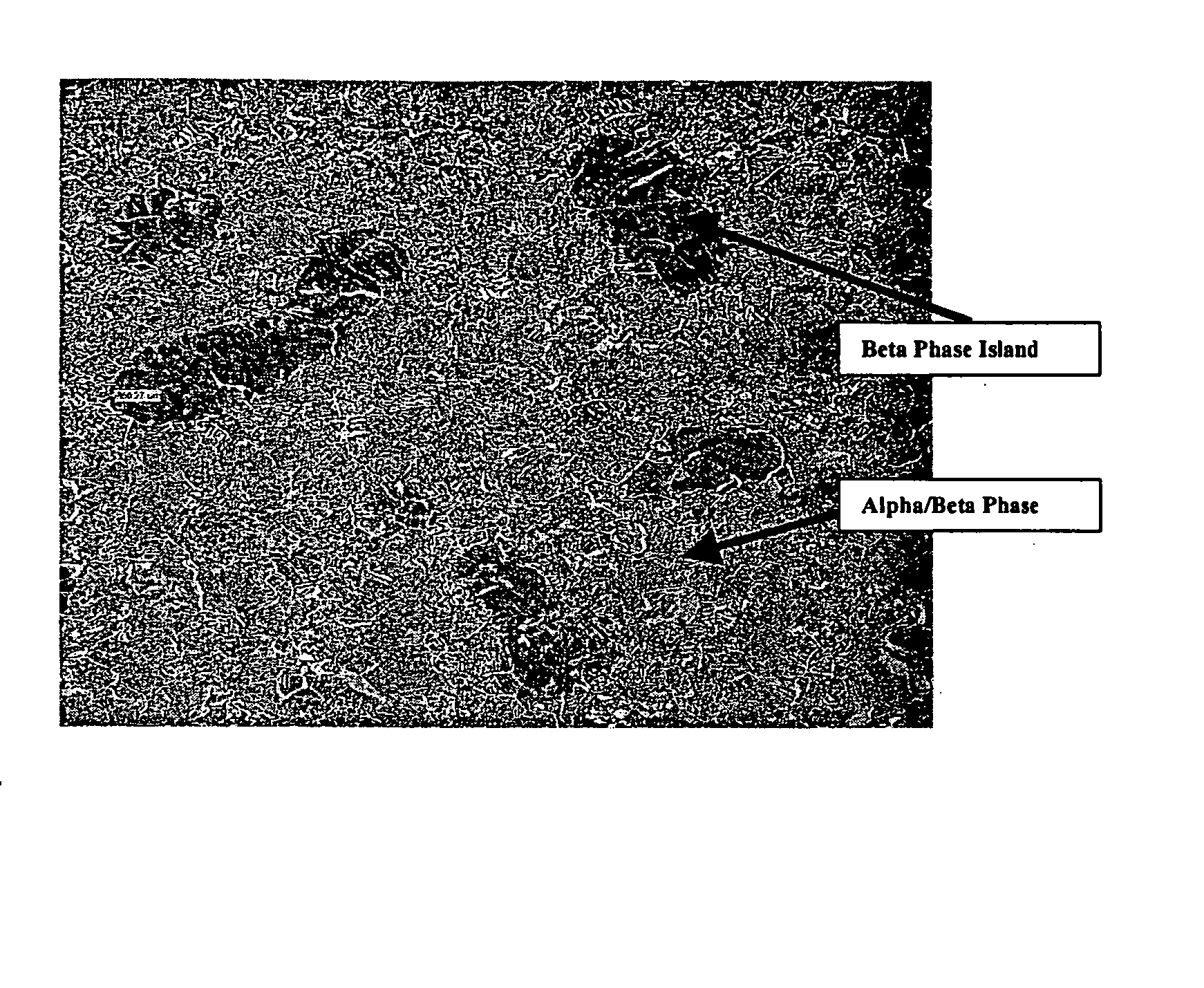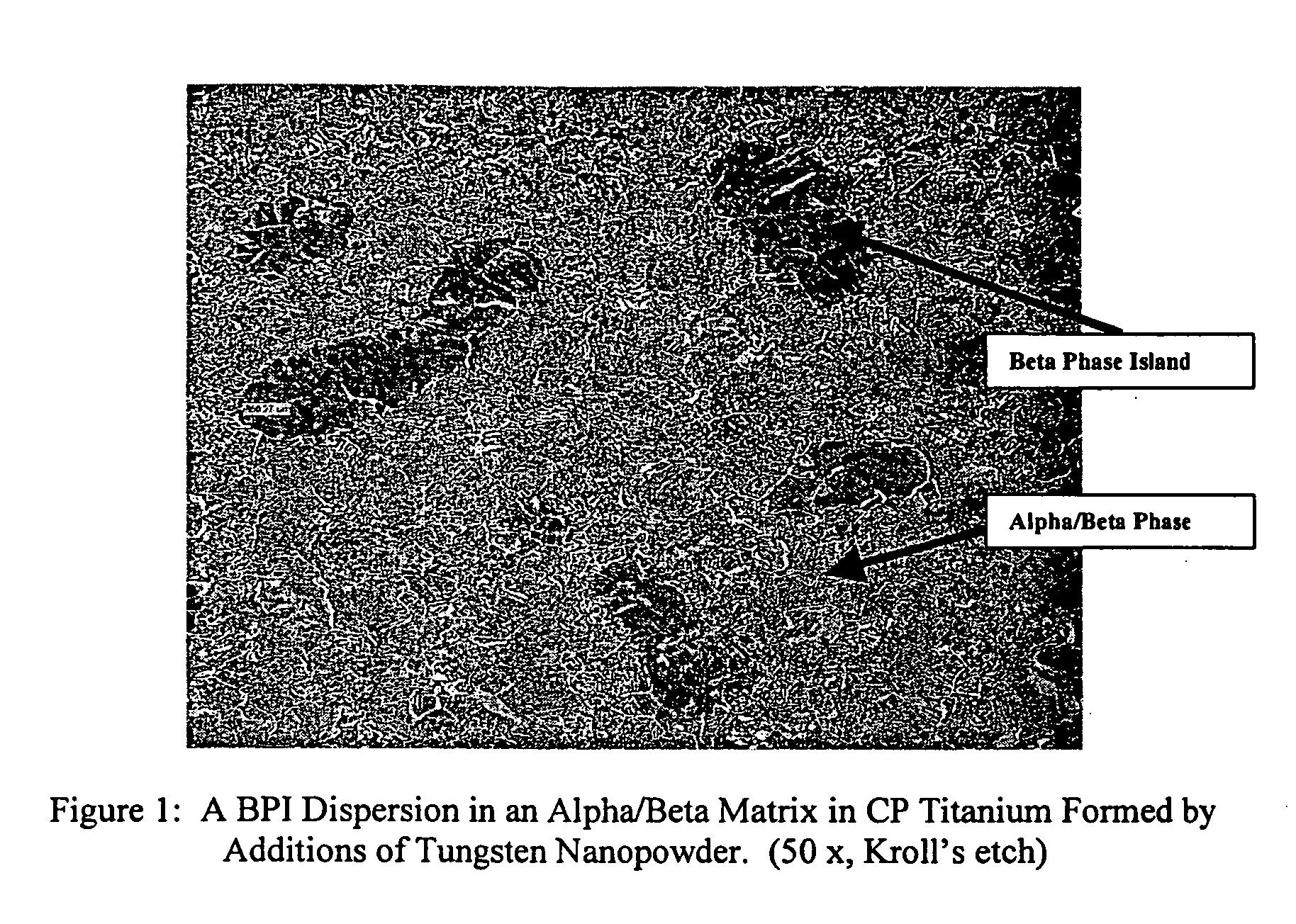Titanium tungsten alloys produced by additions of tungsten nanopowder
a technology of tungsten nanopowder and alloys, which is applied in the field of titanium tungsten alloys and composites, can solve the problems of poor mechanical properties in the final product, inability to commercialize, and difficult preparation of alloys by typical techniques,
- Summary
- Abstract
- Description
- Claims
- Application Information
AI Technical Summary
Benefits of technology
Problems solved by technology
Method used
Image
Examples
example
[0038] A powder metallurgy technique was used to produce a tungsten containing titanium alloy. Using this method, beta phase island dispersions were created in CP Ti and in Ti-6Al-4V with 10% by weight W. In this example, nanopowder 30 to 45 nanometers (0.003 to 0.004 μm) in size with a specific surface area of between 7 to 10 m2 / g was blended with CP Ti powder and processed as described above. These W nanopowders were also blended with CP Ti and master alloy powders to form the Ti-6Al-4V composition shown in Table 1.
[0039] The W nanopowder was taken into solution in the Ti matrix on sintering the compacted blend, forming an alpha / beta structure with a uniform beta phase island dispersion.
[0040]FIG. 1 shows that the W nanopowder completely diffused to form a beta phase island dispersion in the alpha / beta matrix. The diffusion of the W nanopowder transformed the all alpha microstructure typical of CP Ti to alpha / beta containing a dispersion of beta phase islands. In this case there...
PUM
| Property | Measurement | Unit |
|---|---|---|
| Length | aaaaa | aaaaa |
| Fraction | aaaaa | aaaaa |
| Percent by mass | aaaaa | aaaaa |
Abstract
Description
Claims
Application Information
 Login to View More
Login to View More - R&D
- Intellectual Property
- Life Sciences
- Materials
- Tech Scout
- Unparalleled Data Quality
- Higher Quality Content
- 60% Fewer Hallucinations
Browse by: Latest US Patents, China's latest patents, Technical Efficacy Thesaurus, Application Domain, Technology Topic, Popular Technical Reports.
© 2025 PatSnap. All rights reserved.Legal|Privacy policy|Modern Slavery Act Transparency Statement|Sitemap|About US| Contact US: help@patsnap.com


